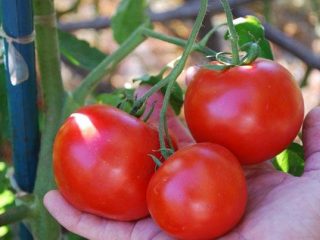Content
In cooking, horseradish leaves are used only for pickling vegetables; the root is mainly used. The degree of bitterness depends on the growing season. Therefore, they choose the right time to dig up horseradish, depending on the purpose of storing it for the winter or processing it right away. The Meadow type of crop grows in the wild; only the Ordinary one is grown in gardens.
When to dig horseradish for food and for horseradish
The root crop does not have a specific time for harvesting; it is unique in that horseradish is dug up in early spring, mid-summer or autumn, it all depends on the purpose of its harvesting - to make supplies for the winter or to prepare a seasoning, the so-called horseradish.
The root of the culture, in addition to micro- and macroelements, contains essential oils: allyl and mustard. They are responsible for the burning taste and specific aroma unique only to this culture. The concentration of essential compounds at each stage of the growing season is different. The highest content is observed in the spring.
Therefore, it is better to dig up horseradish for food in May, when the green mass begins to form. The root structure at the beginning of the season will not be as coarse and fibrous as in the fall.As it ripens, the amount of oils in the chemical composition becomes less and sugars accumulate. In autumn their number reaches its maximum.
You can make the seasoning at any time of the year (even in winter), but you won’t be able to get the desired hot taste.

The medicinal properties of autumn horseradish are much higher than those of spring
Cleaning dates according to the lunar calendar
There is no need to dig out all the horseradish to prepare the seasoning. It is enough to dig up a few root vegetables. It all depends on how voluminous the bush is. They begin to harvest in early autumn. For example, in the Moscow region, horseradish is dug up in September - October, in the southern regions later, until the end of November. To prepare for the winter or plant root crops, it is better to focus on the lunar calendar.
This is justified by the effect on plant sap flow. During the waning moon it slows down, so it is recommended to dig up horseradish at this time. There are days in every month when gardening or vegetable gardening is completely contraindicated - these are the new moon and the full moon. Horseradish will not ripen in a few days; it is better to postpone harvesting until the waning sun.
How to properly dig horseradish in the fall
The plant has a mixed root system. The central rod part, which is used in cooking, can go deep or bend to the side, which complicates the digging process. To do this you will have to arm yourself with a bayonet shovel. The lateral processes also interfere. To make the process of extracting from the soil less labor-intensive and to properly dig up the horseradish root, use the following technique:
- When the leaves grow to 15 cm, the soil is removed from the rhizome.
- The upper part with the processes is exposed.
- To remove small threads, the root collar area is thoroughly wiped with a coarse cloth.The side branches are tightly wrapped.
- Then return the soil to its place.
The development of closed processes stops, the core part will grow even and powerful. During the harvesting period, the soil is raked away from the neck so that it is convenient to take it by hand. Water generously and pull out the plant using loosening movements.
If there is no time and desire for preparatory work, you can properly dig horseradish root with a shovel according to the following instructions:
- They retreat from the center of the bush about 20 cm.
- Dig the plant in a circle, going deep to the bayonet of the shovel.
- Using rocking movements, they try to extract the horseradish from the ground.
- If that doesn’t work, cut off the end of the root that goes deep with a shovel and pull it out.

It is more difficult to dig in heavy clay soil; you will have to remove the plant along with the earthen lump, then clean it of soil residues
How to store
It is recommended to harvest horseradish for storage in the fall, when the foliage turns yellow. The root crop is dug up and processed to remove soil residues.
All root shoots are removed from the surface, cut into pieces, approximately 25 cm each. They are tied into bundles of several pieces. The bottom of the box is covered with a layer of sand, horseradish is laid so that each bunch is sprinkled from the sides and top. Place the container in a cold basement or room without lighting. Horseradish does not lose nutritional value at sub-zero temperatures. Therefore, an outdoor outbuilding is suitable for storage.
Conclusion
You can dig up horseradish with a shovel or pull the plant out of the soil if you prepare it for this first. The main harvesting of root crops is carried out in the fall. They dig up for food throughout the growing season.The product will have its hottest taste in early spring. In summer, the content of essential oils and sugars will be in equal quantities; at the end of the season, the root structure becomes hard, and horseradish acquires moderate bitterness.








